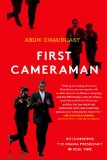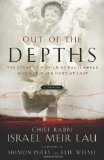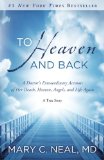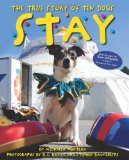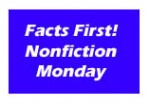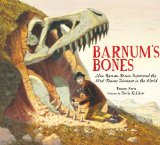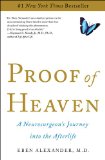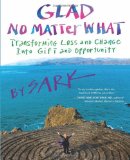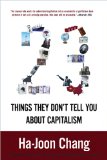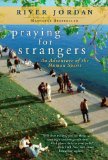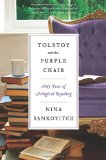 Tolstoy and the Purple Chair
Tolstoy and the Purple Chair
My Year of Magical Reading
by Nina Sankovitch
Harper, 2011. 240 pages.
Starred Review
Three years after Nina Sankovitch’s beloved older sister died, Nina decided to embark on a year of reading. One book each day.
Here’s where she explains setting out on her project:
I needed comfort now. I needed hope. Hope that when life turns on you for the worst, it will turn back again, for the good. We girls had been protected for so long from misfortune. But then everything changed. My sister, the one with the reaching hand, was dead. Life had unleashed its unfairness, its random dispersal of pain, its uncaring lynching of certainty. I had tried running, but now I would try reading. I would trust in Connolly’s promise that “words are alive, and literature becomes an escape, not from, but into living.”
My book reading would be a discipline. I knew there would be pleasure in my reading, but I needed to hold myself to a schedule as well. Without a commitment, the rest of life could creep in and steal time away, and I wouldn’t read as much as I wanted or needed to. I couldn’t have my escape if I didn’t make books my priority. There is always dust to sweep and laundry to fold; there is always milk to buy and dinner to cook and dishes to wash. But none of that could get in my way for one year. I was allowing myself one year to not run, not plan, not provide. A year of nots: not worry, not control, not make money. Sure, our family could use another income, but we’d gotten by for so long on just one salary, we could do it for one more year. We would lay off the extras and find enough in what we had already.
I planned to begin my book-a-day project on my forty-sixth birthday. I would read my first book that day, and the next day I would write my first review. The rules for my year were simple: no author could be read more than once; I couldn’t reread any books I’d already read; and I had to write about every book I read. I would read new books and new authors, and read old books from favorite writers. I wouldn’t read War and Peace, but I could read Tolstoy’s last novel, The Forged Coupon. All the books would be ones I would have shared with Anne-Marie if I could have, ones we would have talked about, argued over, and some we would have agreed upon….
I was ready — ready to sit down in my purple chair and read. For years, books had offered to me a window into how other people deal with life, its sorrows and joys and monotonies and frustrations. I would look there again for empathy, guidance, fellowship, and experience. Books would give me all that, and more. After three years of carrying the truth of my sister’s death around with me, I knew I would never be relieved of my sorrow. I was not hoping for relief. I was hoping for answers. I was trusting in books to answer the relentless question of why I deserved to live. And of how I should live. My year of reading would be my escape back into life.
She doesn’t write in this book about all 365 books — though she does provide a list at the back. Instead, she looks at certain books and the insights from those books or memories they provoked that touched her life and advanced her healing. I’ll provide a few examples:
Man in the Dark is a novel that imagines another world mirroring our own. Two worlds coexisting: Auster uses the device to dig deeply into what keeps us going, what keeps us participating in the motions and the emotions of life. A man, his daughter, and his granddaughter are all facing their own private heartbreaks. They are unsure of how to go on and wavering as to the necessity of even trying to go on. Why bother? And then, in the prose of a lesser-known poet, they find a single sentence that makes perfect sense: “The weird world rolls on.”
The world shifts, and lives change. Without warning or reason, someone who was healthy becomes sick and dies. An onslaught of sorrow, regret, anger, and fear buries those of us left behind. Hopelessness and helplessness follow. But then the world shifts again — rolling on as it does — and with it, lives change again. A new day comes, offering all kinds of possibilities. Even with the experience of pain and sorrow set deep within me and never to be forgotten, I recognize the potent offerings of my unknown future. I live in a “weird world,” shifting and unpredictable, but also bountiful and surprising. There is joy in acknowledging that both the weirdness and the world roll on, but even more, there is resilience.
In talking about The Emigrants, by W. G. Sebald, she says:
But now, in reading my books of escape, I had found another way to respond. It was not a way to rid myself of sorrow but a way to absorb it. Through memory. While memory cannot take sorrow away or bring back the dead, remembering ensures that we always have the past with us, the bad moments but also the very, very good moments of laughter shared and meals eaten together and books discussed….
Only now am I grasping the importance of looking backward. Of remembrance. My father finally wrote out his memories for a reason. I took on a year of reading books for a reason. Because words are witness to life: they record what has happened, and they make it all real. Words create the stories that become history and become unforgettable. Even fiction portrays truth: good fiction is truth. Stories about lives remembered bring us backward while allowing us to move forward.
The only balm to sorrow is memory; the only salve for the pain of losing someone to death is acknowledging the life that existed before. Remembering someone won’t literally bring them back, and for one who died too young, memories are not enough to make up for all the possibilities of life that they lost out on. But remembrance is the bones around which a body of resilience is built. I think my father found an answer to how his mother continued on, and he found a way to go on himself. He wrote a history for me to read. Stories helped him, and stories were helping me, both the stories of my father and the stories in all the books I was reading.
Discussing the book By Chance, by Martin Corrick, with its main character James Watson Bolsover, she says:
Bolsover tries to find an explanation for the two deaths, to uncover some reason they had to happen or if they could have been avoided. He searches for answers in books. At the beginning of By Chance, he asks the question, “If fiction is not concerned to understand, what is its subject? Is its purpose merely to pass the time?” but he already knows the answer. The purpose of great literature is to reveal what is hidden and to illuminate what is in darkness.
I especially enjoyed the part where she talked about the reviewing part of her year of reading:
People share books they love. They want to spread to friends and family the goodness that they felt when reading the book or the ideas they found in the pages. In sharing a loved book, a reader is trying to share the same excitement, pleasure, chills, and thrills of reading that they themselves experienced. Why else share? Sharing a love of books and of one particular book is a good thing. But it is also a tricky maneuver, for both sides. The giver of the book is not exactly ripping open her soul for a free look, but when she hands over the book with the comment that it is one of her favorites, such an admission is very close to the baring of the soul. We are what we love to read, and when we admit to loving a book, we admit that the book represents some aspect of ourselves truly, whether it is that we are suckers for romance or pining for adventure or secretly fascinated by crime.
And often, she’d turn to how much this experience was doing for her:
The Assault is about more than war. Hannah Coulter is about more than war. Those two books — and all the great books I was reading — were about the complexity and entirety of the human experience. About the things we wish to forget and those we want more and more of. About how we react and how we wish we could react. Books are experience, the words of authors proving the solace of love, the fulfillment of family, the torment of war, and the wisdom of memory. Joy and tears, pleasure and pain: everything came to me while I read in my purple chair. I had never sat so still, and yet experienced so much.
I haven’t read a lot of the books she chose. So I especially took notice when she let her thoughts flow from a book I’d read and loved, Little Bee:
But books were showing me that everyone suffers, at different times in our lives. And that yes, in fact, there were many people who knew exactly what I was going through. Now, through reading, I found that suffering and finding joy are universal experiences, and that those experiences are the connection between me and the rest of the world. My friends could have told me the same, I know, but with friends there are always barriers, hidden corners, and covered emotions. In books, the characters are made known to me, inside and out, and in knowing them, I know myself, and the real people who populate my world.
Yes, this is a memoir for book lovers. Again, I especially loved her reflections on what she’d gotten out of writing about the books. This one was from her discussion of finishing up the year of reading:
I do need to talk about books. Because talking about books allows me to talk about anything with anyone. With family, friends, and even with strangers who contacted me through my Web site (and became friends), when we discuss what we are reading, what we are really discussing is our own lives, our take on everything from sorrow to fidelity to responsibility, from money to religion, from worrying to inebriation, from sex to laundry, and back again. No topic is taboo, as long as we can tie it in to a book we’ve read, and all responses are allowed, couched in terms of characters and their situations.
Now, one of my reactions to Tolstoy and the Purple Chair is envy. Wouldn’t it be wonderful to be able to make your “work” each day be to read a book! However, as I write this, I’m on the ballot for next year’s Newbery committee. And serving on the Newbery committee would be a way of dedicating my life to reading for a solid year, every bit as much as Nina Sankovitch did, though perhaps in a different way. I like her approach of treating books as therapy, as escape, as growth. Now my divorce is complete; I’m moving into my first purchased home on my own. What a good time it would be to celebrate the new phase in my life with books!
But even if you don’t have an opportunity to devote a year of your life to books, for anyone to whom that idea sounds delightful, I highly recommend the vicarious experience of spending some time with Nina Sankovitch as she explores her own healing through books.
ReadAllDay.org
harpercollins.com
Buy from Amazon.com
Find this review on Sonderbooks at: www.sonderbooks.com/Nonfiction/tolstoy_and_the_purple_chair.html
Disclosure: I am an Amazon Affiliate, and will earn a small percentage if you order a book on Amazon after clicking through from my site.
Source: This review is based on a library book from the Fairfax County Public Library.
Disclaimer: I am a professional librarian, but I maintain my website and blogs on my own time. The views expressed are solely my own, and in no way represent the official views of my employer or of any committee or group of which I am part.
